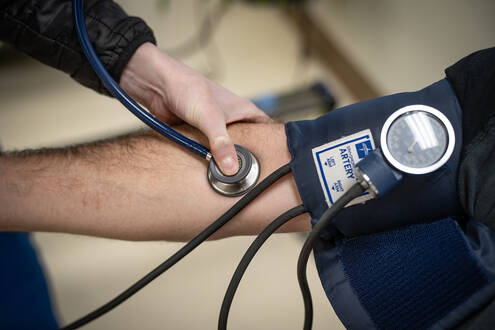
Heart disease is the leading cause of death in America, accounting for one in five fatalities each year.
The most common type of heart disease is coronary heart disease, with one in 20 adults having the disease, according to this recent study by the American Heart Association (AHA). Heart attacks also are frequent In the United States. Someone has a heart attack every forty seconds, says the AHA.
By working to reduce your risks, you can help protect your heart, says cardiologist Kerrilyn C. Hennessey, MD, with the Heart & Vascular Center at Dartmouth Hitchcock Medical Center.
Hennessey provides these three tips from Dartmouth Health in partnership with WMUR.
Monitor your blood pressure
High blood pressure or hypertension is the number one risk factor for heart disease, but it can go undetected because it often has no symptoms. High blood pressure puts strain on your heart and arteries. It also increases your risk of heart attack and stroke. A simple step toward prevention is to have your blood pressure checked regularly by your doctor.
Move your body regularly
A healthy body weight reduces your risk of heart attack and stroke. Small changes to your lifestyle can help. Eking out time to exercise and move your body can provide a healthy starting point. If you want to challenge yourself to do more, move your body at least five days a week for 30 minutes. It will help protect your heart.
Eat heart-healthy foods
Heart disease is America’s number one killer and eating healthy foods that are low in sodium reduces your overall risk.
Why? Because, heart-healthy foods lower your blood glucose levels, “bad” LDL cholesterol, and help maintain a healthy weight.
Heart-healthy foods include leafy green vegetables, like spinach and kale. Whole grains, too, are a rich source of fiber, which can help maintain healthy cholesterol levels. A good rule of thumb is to include many colors on your plate for your meal.
To learn more about heart health or to request an appointment, visit the Heart & Vascular Center website.